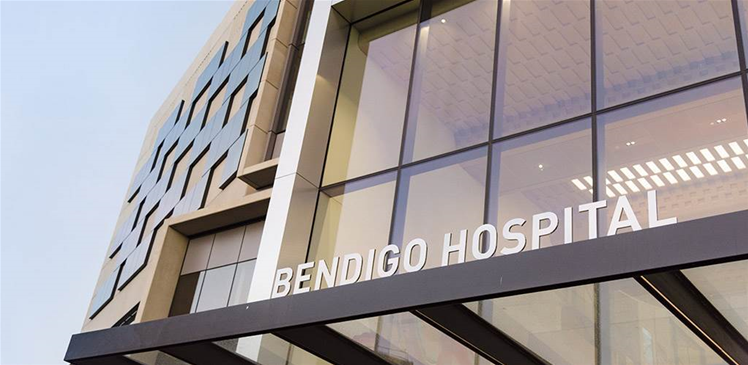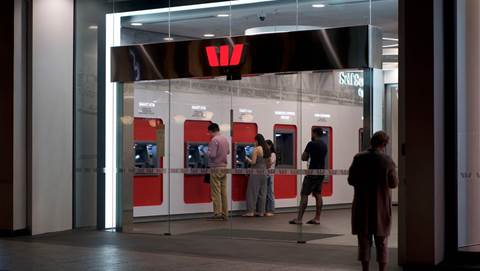Dust off your jokes about doctors’ handwriting, because 700 clinicians at Bendigo Health have just adopted cloud transcription services to turn their remarks about patients into written records.

The organisation has adopted the service as part of a wider IT refresh that Bendigo Health undertook to prepare for the opening of the regional Victorian city’s new hospital in early 2017.
As explained to iTnews by director of ICT architecture and applications Danny Lindrea, moving to the new facility gave Bendigo Health an impetus to develop new applications.
The main new effort is a cloud-hosted integration engine – Microsoft BizTalk in Azure – that it’s using to draw data from legacy and new applications to present in an application that clinicians use at the point of care. The new application combines information from a patient administration system and other data sources so that clinicians get all the data they need to assist a patient.
One function of the application is note-taking, to which Lindrea said Bendigo Health recently added cloud-powered transcription services. Doing so means clinicians can click a microphone icon and talk to whatever device they prefer when adding information to a patient file.
That device could be the conventional PC located between a pair of patient rooms, Surface Pro devices carried by staff or computers on trolleys used for other tasks.
Whatever device clinicians use, if they choose to speak their observations the app transcribes their words. A specific medical term transcription services -CSIROs Ontoserver - works alongside the vanilla Azure transcription service so Bendigo Health's apps can even identify complex medical.
The service can even identify medical terms that correlate to a SCOMED code – a standard medical code used to classify the myriad processes and procedures in the world of healthcare – and mark up transcribed text with the right code. Doing so aligns with the Health Service’s desire to use more structured data, as when documents are verbose they can be used to initiate workflows or just provide more information to clinicians at point of care.
Healthy results
A project to integrate scanned documents creates a similar outcome by ensuring staff can see all relevant information in one app rather than having to navigate silos.
And that extra info can make a big difference to patient outcomes. Lindrea explained that Bendigo Health Psychiatric Services (BHPS) triages an average of 30 patients per day, many of whom have complex conditions. Integrating applications so that staff see a full patient history can mean better triages and better patient outcomes.
It also makes for better compliance. As explained to iTnews by Bianca Matthews, BHPS' Development and Systems Coordinator for Psychiatric Services, Victoria's Mental Health Act has many reporting requirements. To assist in ensure these are met in relation to compulsory patients, BHPS have employed a Mental Health Tribunal Coordinator. The Administration and Mental Health Act dashboards within the system ensure that, parallel to the clinical management of patients, all legal requirements are managed and reported appropriately and in accordance with these statutory requirements, further supporting the service in protecting the rights of these patients.
“Beforehand this was heavily reliant on clinicians knowing what they had to communicate and to whom within the required timeframes," Matthews said. "Now that's all automated. The Mental Health Tribunal coordinator gets live notification regarding the legal status of our compulsory patients across the region allowing her to manage and schedule the required Mental Health Tribunal hearings accordingly.”
“At the same time, a separate live notification goes…to our administration staff allowing them to record the completion of that paperwork in the statewide CMI database, streamlining our reporting requirements with the Department of Health.”
Keeping legacy alive with dignity
Since the opening of its new hospital, Bendigo Health has already migrated two applications to Azure – a digital medical record app and a community psychiatric services solution. The cloud also hosts a data warehouse. But the integration layer is making the most difference to the organisation’s software development and maintenance efforts, by shifting it from developing apps to delivering tools to end-users.
“We are spending more time on the user experience rather than different apps,” Lindrea told iTnews.
For now he’s still spending some time managing on-prem hardware too, as it will take time to move legacy apps.
But Lindrea said he feels the work on the integration engine will at least mean that legacy apps make a more positive contribution.
For the future, however, he’s all-in on cloud. Dual telco connections satisfied worries about resilience of cloud-based apps, while even in the Service’s many far-flung offices (the Service covers a quarter of Victoria’s area), 4G and other connectivity options suffice.


.png&h=140&w=231&c=1&s=0)



 iTnews Executive Retreat - Security Leaders Edition
iTnews Executive Retreat - Security Leaders Edition












_(1).jpg&h=140&w=231&c=1&s=0)



